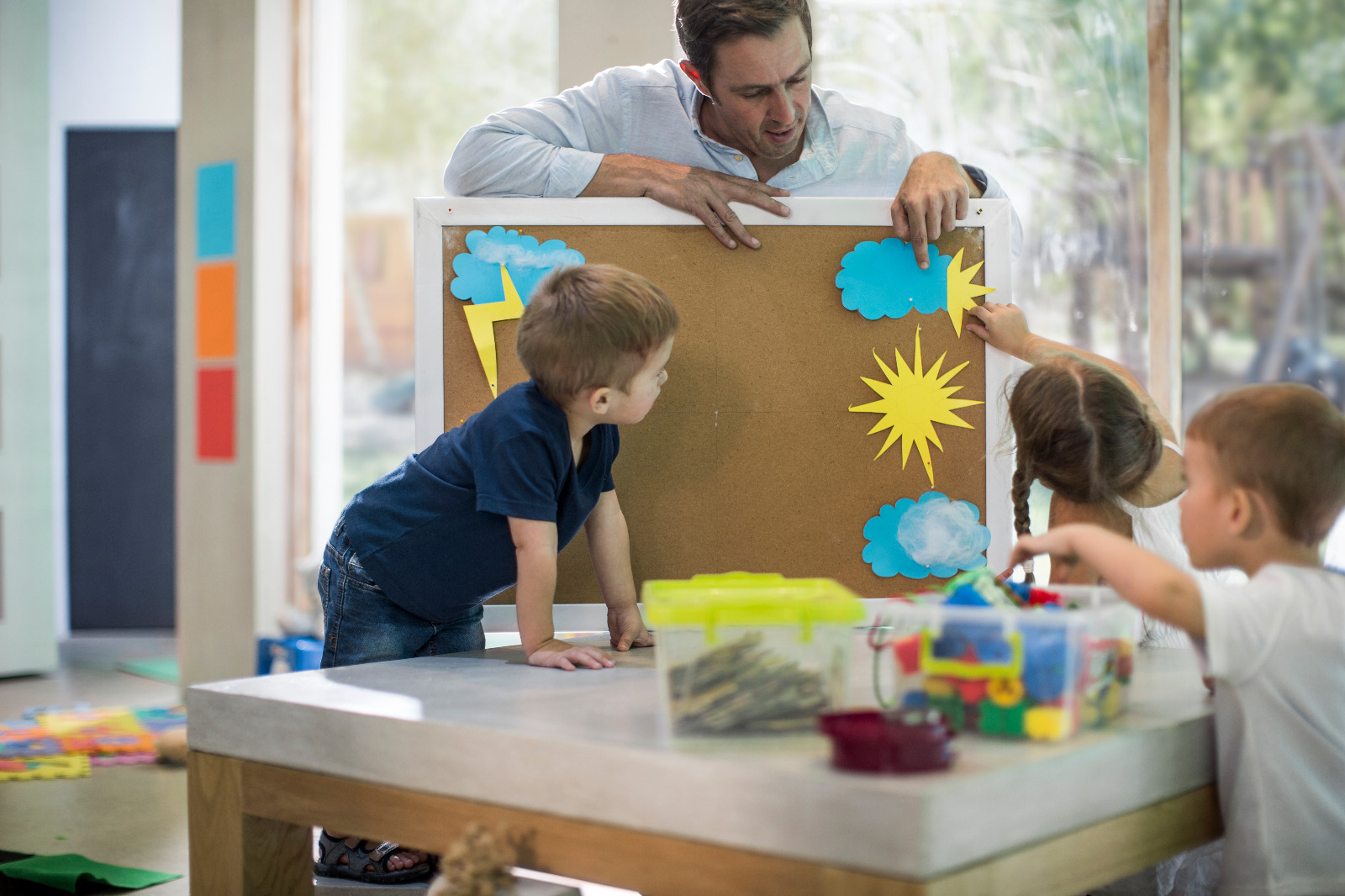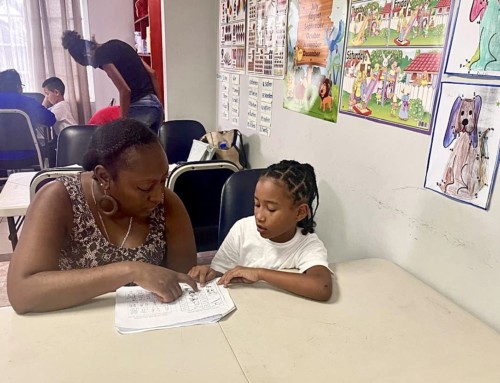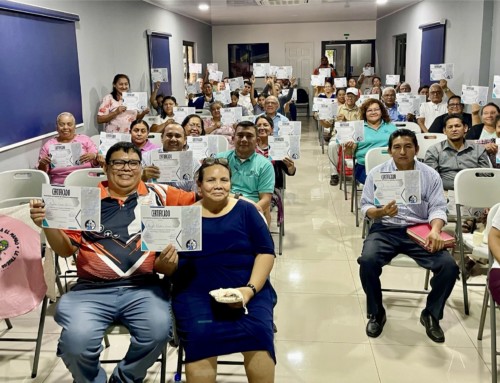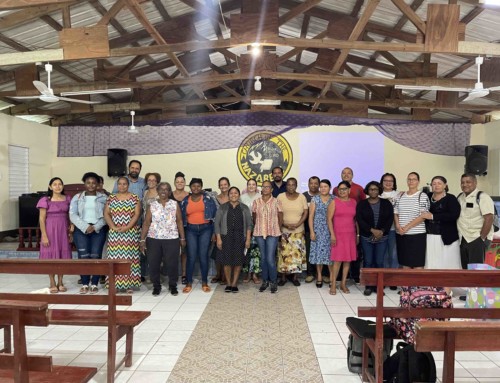Introduction
This article will explore neuroeducation and its application in church teaching. It will be based on Jesus’ ministry and how He used innovative techniques that are now understood through neuroscience. The article will emphasize the importance of creating safe and stimulating environments for children’s comprehensive development and how neuroeducation can transform Sunday School teaching.
Concept of Neuroeducation and Its Contributions to Church Education
The world is constantly changing, and the field of teaching and education is no exception. Neuroeducation arises as a response to adequately address educational challenges and support the education of our churches. Neuroscience is presented as a discipline that can transform teaching and learning. Thirty years ago, little was known about how the brain functions and learning occurs. However, the landscape is different today, thanks to technological and medical advances. This should encourage us to explore this science to effectively use its findings in our daily practice of teaching and learning in the church, just as Jesus did, employing innovative methodologies and techniques in His time to capture attention and transform hearts. The modern church must take on the challenge of seeking innovation in presenting God’s Word, generating a need for change in how people think and act.
Christian teaching in the church is fundamental for the full development of our children in spiritual, cognitive, social, emotional, and health areas. It involves creating healthy and safe environments with stimulating development contexts that consider children’s abilities, skills, and competencies, allowing them to engage in care, holistic attention, and support—not just for the present but also for their future lives.
To achieve this, it is necessary to implement new models, methods, and techniques in the daily practice of Sunday School teachers, in line with neuroeducation, which is the science that studies how the brain behaves when learning and how we can help children apply their learning in their daily lives. This science began to develop in 1988, but interestingly, when we carefully read the Gospels, we can find Jesus as a neural leader who utilized His knowledge in social, emotional, and affective areas to ensure that His disciples could identify with and internalize each of His teachings over the three years of His ministry. He walked with them, ate with them, and felt the pain of many, creating a bond of trust to teach them about the kingdom of God and His evangelization plan.
Neuroeducation posits that modeling is a precious learning tool, and Jesus extensively uses it in the Bible. This is fundamental for creating learning in the prefrontal cortex, located from the forehead to the side behind the ears. This area of our brain has the following functions:
- Planning and executing learned and intentional behaviors.
- Personality control.
- Control of conduct.
- Control of reasoning.
- Appropriate control of emotions.
- Involvement in speech and movement.
- Facilitates complex thinking, such as imagination, decision-making, and reasoning.
- Synthesizes external stimuli.
- Verifies that an action has taken the right course.
In this area, we find neurons (the cells responsible for receiving and sending messages to the body and our brain), particularly mirror neurons, discovered in 1990 by Italian neuroscientist Giacomo Rizzolatti. These nerve cells activate when we perform different actions we observe in others. An example of how these neurons work is when someone yawns, and another person next to them mimics the yawn (an eco-phenomenon called echopraxia). This also happens sometimes when we laugh and in other similar behaviors.
These mirror neurons facilitate learning acquisition more through what we see or imitate than through what we speak, hear, or write. Jesus spent much of His time shaping His disciples, teaching them the fundamental truths of faith, and exemplifying the incarnate Word.
The excellent task for Sunday School teachers is to shape students by referencing the life and work of Jesus. If we allow Him to transform our minds and hearts, we will impact our students’ lives through our testimony. Another important teaching from the Gospels about how Jesus taught is the connection He formed with people. He always took time to listen, felt the needs of others, and sought ways to help. His interest went beyond the spiritual realm, as He also wanted to address emotional, physical, and mental needs.
Bonding is crucial because it creates an emotional connection where the child feels safe, stable, and receptive to the message. This connection influences attention and motivation and enhances the learning process. It also opens the opportunity for open communication in a trusting environment, where concerns and difficulties can be safely expressed to seek possible solutions, following Jesus’ model.
If we want to learn from the most outstanding neurological leader in history, we must learn more about Jesus, His methodologies, His spiritual routines, and His relationship with the Father. We must encourage ourselves to practice in our lives and ministry what Jesus accomplished, and our students will imitate us. Neuroeducation makes us reflect that learning does not occur in a vacuum; thus, the affectionate bond between the Sunday School teacher and the children is crucial for a successful educational process.
A learning brain can transform its daily routine in thinking and acting. Each learning experience physically alters previous connections to create new connections with different actions. Children can achieve this thanks to brain plasticity, the brain’s ability to adapt to new situations, restructure, or recover. This capacity allows the brain to learn and develop throughout life.
The Bible refers in various verses to the need to change from the old self to the new self or to be born again. Jesus is our reference, and His teachings must connect with our children’s lives to the extent of generating radical changes by their own decisions. King David expressed in Psalm 51:10: “Create in me, O God, a clean heart, and renew a right spirit within me.” Ephesians also challenges us, in chapter 4, verses 22 to 32, to put off the old self and renew our minds. These passages reflect the learning process and how we should practice it by generating new neural connections that lead to changes, thus achieving meaningful learning in our students. Meaningful learning occurs when we connect prior knowledge with new knowledge to achieve relevant outcomes. To achieve this change, both spiritual and human elements come into play. Thus, those responsible for conveying the message through teaching must know how to capture the brain’s attention, motivate, and ensure that learning translates into daily experiences and becomes a constant practice.
To effectively carry out this type of work, the intervention of the Holy Spirit is a determining factor so that children experience a change in their thinking and acting. It is essential to know various techniques for capturing the listener’s attention. We must understand how the brain learns and how we store that learning in long-term memory. Most importantly, we must put that knowledge into constant practice.
Conclusions
We currently face a significant challenge. We need to present the most outstanding neurological leader in history through our daily service in ministry. We are called to a life of holiness and to care for all integral areas to shape Jesus in our lives and, as a result, impact our listeners with our testimony. We also need to be open to exploring new strategies, methodologies, and techniques that break with outdated paradigms that do not support the current needs of students. Meaningful learning should be the foundation for the Holy Spirit to act in their lives so that they can imitate Jesus. Let us encourage ourselves to study and delve into the topic to put it into practice in our churches.
Bibliography
- Caroline Bibiana Coral-Melo et al. (2021) Neuroeducation and Meaningful Learning: An Experimental Study in Three Primary Education Institutions, UNIMAR Journal.
- Marcelo Rodríguez Ceberio – Sonia E. Rodríguez (2019) Mirror Neurons: A Biological Genesis of Relational Complementarity, Rodríguez E, Volume 40 (3).
- David Bueno (2019) Is There a Formula to Determine If Educational Methodology Has Scientific Validity? Academic Rigor.
- Teresa Lleixa, et al. Education 2020-2022: Challenges, Trends, and Commitments, University of Barcelona.
- David Bueno, Genetics and Learning: How Genes Influence Educational Achievement, Journal of Neuroeducation.
- David Bueno; Anna Foré (2018), 5 Principles of Neuroeducation That Families Should Know and Practice, Ibero-American Journal of Education, Vol. 78 No. 1, pp. 13-25.
- David Bueno, How Learning Changes Our Brain: Brain Flexibility, Master Route Journal, Edition 25.





